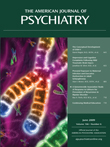Paul McHugh is a brilliant psychiatrist with immense experience (he was chief of psychiatry at Johns Hopkins from 1975 to 2001), a penetrating intellect, scathing rhetoric, and a wonderful facility for attacking and dismantling irrational fads and dangerous fallacies. This book shows McHugh at his best, and his passionate advocacy against the enthusiasts of recovered memory, multiple personality, and some of the supporters of posttraumatic stress disorder (PTSD) will bring many to his side.
Unfortunately, his arguments are seriously weakened—some will say totally undermined—by his equally passionate advocacy against Freud and psychoanalysis, a subject on which he is much less expert. His rhetorical tone barely changes, but the nature of his argument shifts considerably. When he bashes recovered memory, he names specific patients, psychiatrists, institutions, malpractice cases, and the like, with which he is personally familiar. When it comes to Freud, his thesis is that these recent errors are based on early Freudian concepts, which is like condemning Alexander Hamilton for the current economic crisis. One of his pet points is that psychoanalysts have led in blaming the problems of the present on traumas of the past, the dominant theme of psychoanalysis 110 years ago, since replaced by belief in the importance of fantasies, not traumas of the past. He points out in passing that very few of the multiple personality disorder-PTSD community were actually psychoanalysts but doesn’t mention that the psychoanalytic community has been attacked much more often for denying real trauma and interpreting memories of trauma as memories of fantasy rather than reality.
McHugh says virtually nothing about current psychoanalysts or their ideas, beliefs, theories, or evidence. (When he briefly shifts from his passion to his estimates of facts, his numbers are somewhat surprising. He cites with approval an estimate of 1 million new cases of false memory syndrome each year at the height of the epidemic.) He comes out squarely in the middle on the question of the frequency of actual childhood sexual abuse, suggesting that “about 20 percent of women have had some form of unwanted sexual experience forced on them, especially during childhood and adolescence” (p. 72). Twenty percent of women would be over 400,000 per year in the United States. Thus he has no argument with the occurrence of childhood abuse (unlike most psychoanalysts, who are more likely to suspect fantasy masquerading as memory). His protest is against the notion of recovery of repressed memory.
McHugh criticizes Freudians for their “school of suspicion,” seemingly oblivious to the vital role that his relentless suspicion played in uncovering egregious practices. Suspicion is a problem if it malevolently challenges truth, but the absence of suspicion is a problem if falsehood, perhaps based on denial, is left unchallenged. McHugh is confident that he can tell these apart, while certain that others cannot.
What bothers McHugh about psychoanalysis? First, the psychoanalysis he rails against would not be familiar to the vast majority of contemporary psychoanalysts. He states that “psychoanalysts are sure that patients’ problems rest upon some hidden sexual conflict” (p. 27)—perhaps 100 years ago, but hardly today. McHugh terms his enemies as “manneristic Freudians”—a straw man he creates for his argument—who copy the master Freud but lack his genius. One can always find disciples who miss the point, whether the master is Freud or Kraepelin or even McHugh. But he is disturbingly comfortable in generalizing the problem to all Freudian disciples, even those who are in strong agreement with him on recovered memories and PTSD, and even to Freud himself. Furthermore, he casually dismisses psychoanalytic views that have been widely accepted in mainstream psychotherapy without alerting the reader that his position is idiosyncratic, rejecting a broad professional consensus, and without discussing counterarguments. Thus when he states (p. 173), “No one any longer believes that the hysterical patient’s physical display represents symbolically his or her unconscious conflicts over sexual gratification,” he is simply wrong. Furthermore, if the thought is brought up to date, e.g., “hysterical physical symptoms are symbolically linked to unconscious conflicts, often involving sexual, aggressive, or dependent fantasies, and frequently reinforced by the secondary gain that accompanies them,” it represents the dominant view of American psychiatrists, both psychoanalytic and otherwise. McHugh has every right to challenge this view and advocate his alternative theory, one that emphasizes secondary gain, ignores the role of childhood and unconscious factors, and offers no explanation at all for the specific content of the symptoms. However, if he neither mentions nor deals with the dominant view, the book is far less suitable for readers who are not well versed in the field.
In sum, this is a brilliant but deeply flawed book. McHugh invites us to join him in an adventure of exposing a foolish fad that has injured patients and families and in speculating about the underlying vulnerabilities in psychiatry that predisposed it to these errors. With great enthusiasm and biting language, but no data, he links these underlying errors to Freud and psychoanalysts. He is consistent in his metanarrative, a commonsense empiricist who won’t be taken in by false theories, but is inconsistent in his selection of evidence, presenting only that which supports his views. Oddly, this is the very error for which he rightly indicts the recovered memory movement.
Let the reader beware: There is much to learn here about recovered memory and PTSD enthusiasts, about popular fads in psychiatry, and, unfortunately, about the dangers of blind skepticism—applied selectively to ideas with which one differs, regardless of the evidence.

